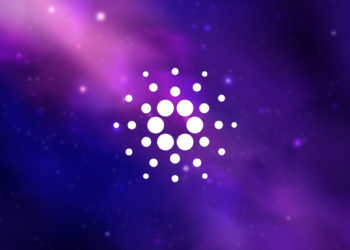
Cardano network is more often considered to be ‘Ethereum Killer’ because of its potential features that are enough to compete with the already established and prominent smart chain Ethereum. Ethereum’s features like smart contracts became the basis for revolutionary products like DeFi and DApps, which made Ethereum a significant network. But with great power comes the great responsibilities which initially Ethereum network successfully catered to, but as the crowd grows on the network, it brought the problems alongside.
The growing number of users resulted in congestion on the network, which eventually turned out to be slow and expensive. Along with the consensus mechanism of proof of work (POW) soon raise environmental and energy consumption concerns. Various projects saw an opportunity and acted for the same to counter these problems.
Cardano was one among those aspiring networks to beat Ethereum by continuing its extraordinary features by aiding its pain points. High-speed transactions in very low gas fees, interoperability with other networks, and use of proof of stakes (POS) consensus mechanism were some salient features of Cardano that made it preferable options over others.
Journey of Cardano Smart Contracts
Cardano was founded in September 2017 by Charles Hoskinson, who was also co-founder of the Ethereum network. Till 2021 Cardano network was going at its own pace, but in September of the same year, it played its smart move and launched its hard fork Alonzo, making it able to deploy smart contracts on the network.
Initially, Alonzo was in the testing phase; later, the hard fork went mainnet on Cardano, paving the way for smart contracts on the network. Smart Contracts on the Cardano network were written in Plutus scripts, a development language for purpose-built smart contracts, and work as an execution platform that uses Haskell as a functional programming language.
Plutus language scripts enabled decentralized applications to be built on the Cardano ecosystem. Initially, it did only some small projects to check whether the procedure was going smoothly.
Till December, the Cardano network had deployed almost 930 smart contracts, which is way lesser than the staggering amount of 2.5 million smart contracts on Ethereum. Although for that matter, Ethereum already had approx 900K smart contracts deployed when Cardano’s Alonzo hard fork was being upgraded.
It’s just a matter of time and maybe the Cardano network will also be able to manage to attain the heights as Ethereum did.
What are Smart Contracts?
Smart Contracts can be understood as an automated digital agreement written in code that is some computer language. These contracts keep track, verify, and execute the transactions as fixed between various parties. Those transactions on smart contracts execute automatically when predetermined conditions are met.
Smart Contracts put the idea of decentralization to reality by bringing a self-executing and reliable system that does not require any authority or action of third parties. They are transparent and irreversible because of their formation as they are stored and distributed across different decentralized blockchain networks.
In a nutshell, Smart Contracts are non-upgradable and immutable contracts that cannot be changed. They are easily managed to distribute and secured from being tampered with anyhow. It is safe due to encryption, fast and cost-effective since it does not require any third party or middle man to authenticate the process resulting in saving money and time.
Some more details about Cardano Smart Contracts Languages
Cardano network introduced smart contracts availability in 2021 after Alfonzo fork upgrade as Plutus language was used to create initial smart contracts. However, other than Plutus, some other languages can also be used by the networks to develop smart contracts.
- Plutus — It’s the primary language that acts as an execution platform for purpose-built smart contract development. Contracts on Plutus consist of parts running on blockchain and other parts that run on the user’s machine. Plutus uses one of the leading functional programming languages, Haskell, on which it provides a safe and full-stack programming environment.
- Marlowe — is a DSL that is a domain-specific language used for writing and executing financial contracts allowing contracts to build visually and in more traditional code. Financial institutions can use it to develop and deploy custom instruments for their services to customers and clients.
- Glow — another domain-specific language that develops decentralized applications on the blockchain. Using Glow, users can safely create secure DApps on smart contracts that run in an adversarial environment.
Cardano (ADA) has been a well-known and prominent blockchain network since its launch. The network has seen numerous ups and downs in its entire journey and so does its native utility token ADA. From the very beginning where ADA price was a mere $0.017 in oct, 2017 till $3.10 in Sept 2021. If you will notice, it’s the same time when Alonzo was upgraded to the Cardano network.
ALSO READ: Russia Giving Fuel To Bitcoin Value: Mark Mobius
This news is republished from another source. You can check the original article here

Be the first to comment